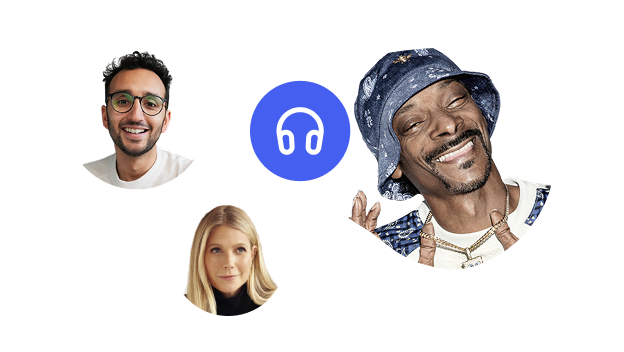Decoding vs. encoding in reading
Many teachers use research-based techniques to help children develop better reading skills. Using proper methodologies when teaching emerging readers is crucial for improving their accuracy, memory, and speed.
Implementing decoding and encoding techniques is popular among teachers with successful track records. However, despite some using these terms interchangeably, understanding their similarities and differences is vital.
Each technique refers to a separate process involved in reading and language comprehension. By approaching each one correctly, teachers can ensure that young students master word reading, oral language, and other awareness skills.
This article explains how the techniques affect a child’s reading development and why some students must master them as early as possible.
What is decoding?
Decoding is one of the most basic reading skills. It allows readers to segment words, differentiate sounds, and blend them. Decoding requires knowledge of letter-sound relationships and an ability to identify written words and understand their meaning based on that knowledge.
This skill can help children process words they know from listening, not reading. Usually, decoding skills can be improved by increasing a child’s phonics and phonemic awareness. Phonics instruction is essential for decoding various sound patterns and identifying corresponding spelling.
What is encoding?
Encoding enables people to take apart spoken words into individual sounds or phonemes. Proper word recognition relies on identifying phonemes, as they help distinguish different words.
Good phonemic awareness is essential to improving automatic word recognition and the ability to read without spelling out each letter. Familiarizing kids with spelling patterns, sound-symbol correspondences (sounds to letters), and print patterns or letter sequences requires solid encoding and decoding skills.
How are decoding and encoding connected?
Decoding and encoding are connected. Decoding helps the learner read while encoding helps them spell.
Understanding how decoding and encoding combine to help early learners and emerging readers is a must for at-home and classroom education. It’s even more important to use both when teaching children with dyslexia or ADHD and other learning challenges.
While reading and spelling are different brain activities, they share a strong connection. Think of them as two sides of the same coin.
The decoding process works as follows:
- Seeing the word
- Segmenting phonemes in the word
- Blending the sounds together
- Connecting both spoken and written words to one or more meanings
The spelling process works as follows:
- Hearing a word
- Thinking about the word’s meaning
- Segmenting the whole word’s phonemes
- Writing corresponding letters or graphemes representing spoken phonemes or speech sounds
Working on these two skills simultaneously in a proper phonics program is one of the most efficient ways to enrich phonics knowledge and create skilled readers.
But doing it correctly is vital. Here are some best practices to use.
- A systematic approach - The systematic approach to improving awareness skills is crucial. This type of phonics instruction emphasizes mastering the sound-symbol relationship and how it improves the orthographic mapping process.
- Linking sounds to print - Learning to link spoken sounds to print letters first is a good approach to reading instruction. It also avoids working with confusing English letter combinations.
- Teaching spelling generalizations - After harnessing phoneme-grapheme mapping, teachers or parents can introduce more layers of spelling generalizations.
- Create opportunities for phoneme-grapheme mapping - The English language has many sound-letter relationships classified as regular. It also contains up to 36% of words mapped from the sound-symbol correspondence. Variation helps children learn new words through patterns instead of predictive text or similar cues.
- Careful planning - The science of reading says that reading comprehension improves when teaching reading with decoding and encoding in mind. As such, reading fluency improves from carefully planned reading programs based on the existing reading ability. Matching the reading ability to new words on worksheets helps to enhance automaticity.
- Daily reviews - Solidifying a child’s phonics knowledge requires frequent review of previously learned phonetics. Ask kids to spell words repeatedly, decode and encode them, and share their definitions.
Speechify - Use text to speech to develop literacy skills
Using innovative assistive technology can help teachers and parents support children as they develop decoding skills and improve reading fluency. Speechify uses TTS (text to speech) technology to read print and digital text aloud.
It stands out through its natural-sounding voices, real-time narrations, and multilingual support. The Speechify software efficiently reads individual letters, words, and entire articles aloud.
It’s compatible with various decoding and encoding study materials. It can sound out words and letter sounds and do it in a controlled environment to cater to every student’s needs.
Try Speechify for free to see its excellent speech synthesis technology at work and begin honing your child’s language comprehension and reading skills.
FAQ
What is an example of encoding in reading?
Encoding is the ability to segment spoken words into individual sounds or phonemes. For example, listeners with good encoding skills can differentiate between the three sounds (“id,” “d,” and “t”) associated with the suffix “ed.”
Are encoding and decoding the same?
Encoding and decoding are different processes that share some phonics and grapheme awareness skills.
What is phonological awareness?
It’s the awareness of a word’s phonological or sound structure and one of the staples of developing strong reading skills and oral language comprehension.
What are some useful decoding strategies?
Decoding strategies include tracking words with the finger, focusing on familiar letter groups and patterns, and blending individual sounds to read a whole word. Stretching out sounds can help accelerate the learning process and contribute to faster reading skills.
What is the Orton-Gillingham approach?
The Orton-Gillingham approach is a structured methodology for teaching kids to read and spell. Educators segment reading and spelling into multiple skills. It then focuses on various concepts, like introducing visual, auditory, and kinesthetic elements to the teaching approach. With Orton-Gillingham, kids may learn a new language by listening, speaking, seeing, and writing.





